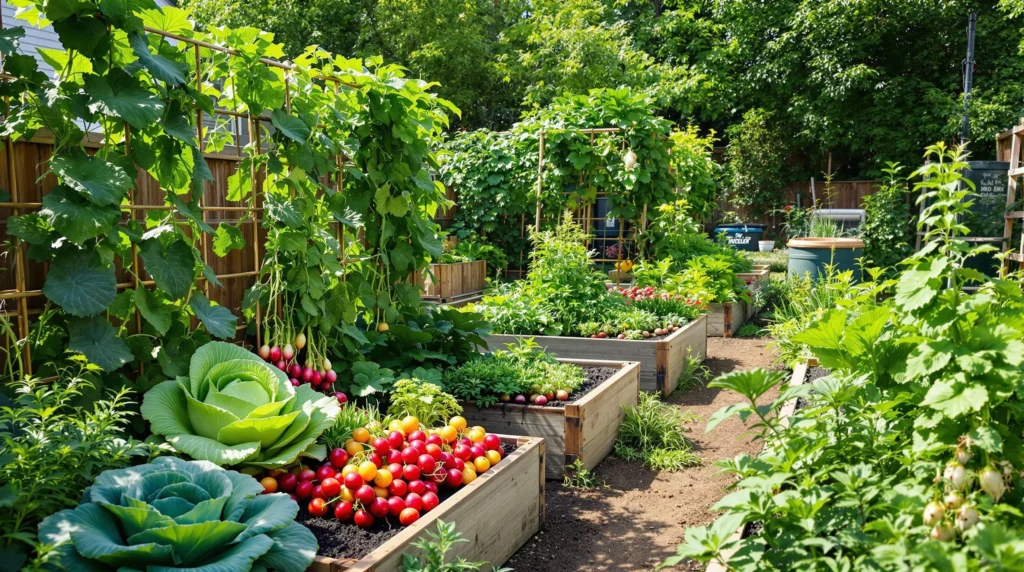10 Essential Garden Ideas for Growing Fermentation Crops
1. Dedicate a Cabbage Corner
Create a designated area for growing different cabbage varieties like Napa, red, and green cabbage. These fermentation staples thrive in cool weather and need about 18 inches of space between plants. Enrich the soil with compost before planting and water consistently to develop large, flavorful heads perfect for kimchi and sauerkraut.
2. Establish a Cucumber Trellis System
Install a sturdy trellis for growing pickling cucumbers vertically. This space-saving approach improves air circulation, reduces disease, and makes harvesting easier. Choose varieties specifically bred for pickling such as ‘Boston Pickling’ or ‘National Pickling’ for the crispest fermented pickles.
3. Plant a Pepper Patch
Designate a sunny spot for hot and sweet peppers used in fermented hot sauces and curtido. Group different varieties together, from mild bell peppers to spicy jalapeños and habaneros. Space plants 18-24 inches apart in well-draining soil for maximum yield and flavor development.
4. Create a Root Vegetable Row
Dedicate a section to fermenting favorites like radishes, carrots, beets, and turnips. Loosen soil deeply (12-18 inches) before planting to allow proper root development. Succession plant every 2-3 weeks for a continuous harvest of differently sized roots for various fermentation projects.
5. Grow an Herb Border
Surround your fermentation garden with herbs that enhance fermented foods such as dill, garlic, oregano, and thyme. Plant these aromatic companions along garden edges for easy access when preparing ferments. Their natural antibacterial properties can also help deter pests from your main crops.
6. Design a Garlic and Onion Bed
Establish a dedicated bed for alliums like garlic, onions, leeks, and shallots that add depth to fermented foods. Plant garlic in fall for early summer harvest, and stagger onion plantings for continuous supply. These crops prefer well-drained soil amended with aged manure and minimal competition from weeds.
7. Carry out Crop Rotation
Create a 3-4 year rotation plan for your fermentation garden to prevent soil-borne diseases and pests. Group crops by family (brassicas, nightshades, alliums, etc.) and move each family to a different bed each season. This practice maintains soil health and ensures stronger plants with better flavor for fermenting.
8. Build Raised Beds for Better Drainage
Construct 12-18 inch high raised beds filled with quality soil mix for growing fermentation crops. The improved drainage prevents root rot in crucial crops like cabbage and radishes. The warmer soil in raised beds also extends your growing season on both ends for more fermentation harvests.
9. Install a Water Collection System
Set up rain barrels or a drip irrigation system specifically for your fermentation garden. Consistent moisture is crucial for developing crisp vegetables that ferment well. Collect rainwater when possible, as chlorine-free water is ideal for both plant health and the subsequent fermentation process.
10. Create a Fermentation Harvest Station
Build a dedicated harvesting area near your garden with a washing station, cutting board, and storage containers. This allows you to process vegetables immediately after harvest when their beneficial bacteria counts are highest. Include a shade covering to protect delicate greens while processing multiple batches.
Creating the Perfect Garden Layout for Fermentation Plants
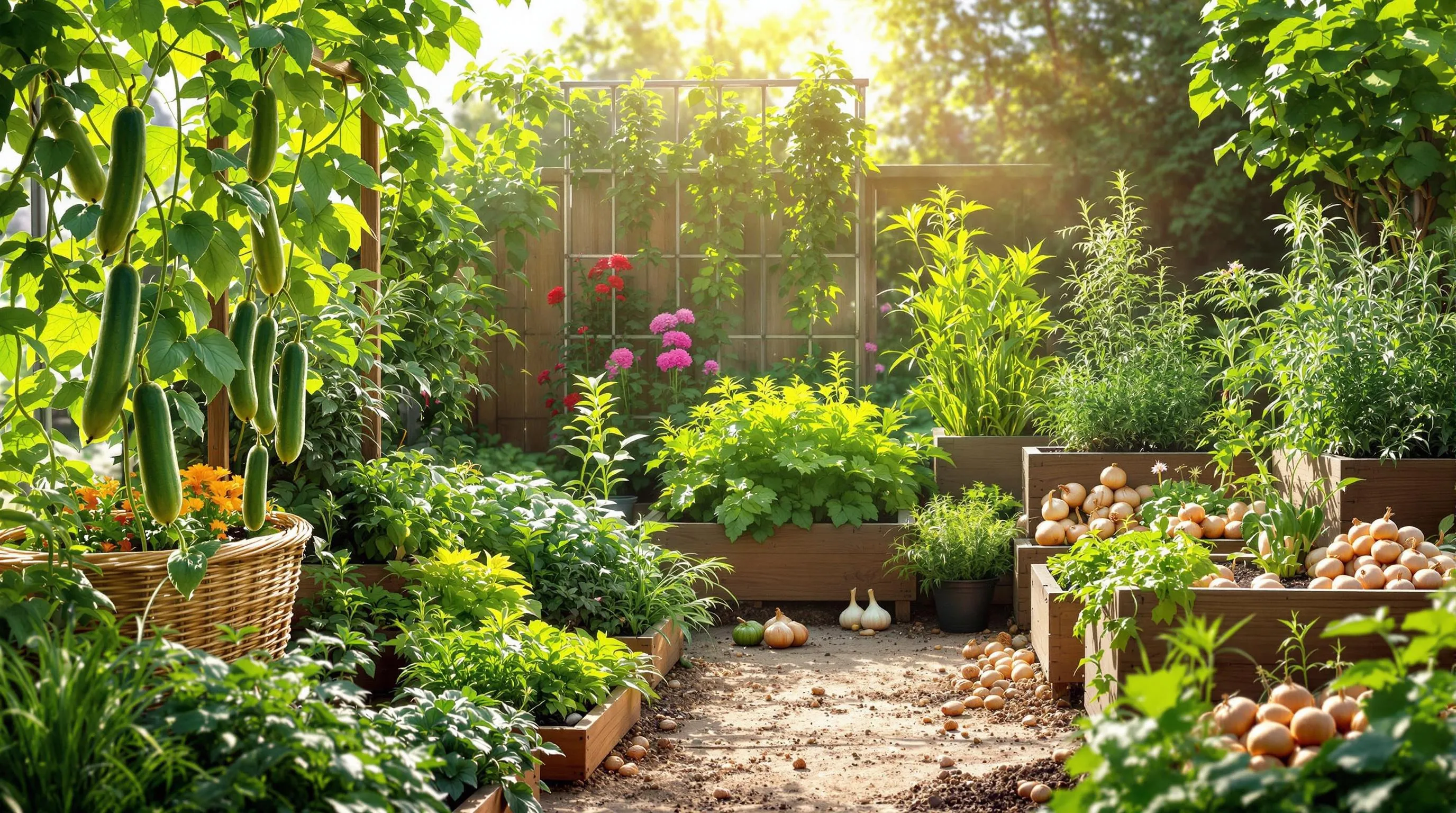
Designing an efficient garden layout specifically for fermentation crops will maximize your harvest and streamline your fermentation process. With thoughtful planning, you’ll create a productive space that supports healthy plant growth and convenient harvesting.
Companion Planting Strategies
Companion planting is a game-changer for your fermentation garden, boosting yields while reducing pest problems naturally. Plant cabbage near aromatic herbs like thyme and rosemary to repel cabbage moths and aphids. Cucumbers thrive alongside sunflowers, which provide natural support and partial shade. Pair garlic with your beets to deter pests while improving flavor profiles. Nasturtiums serve as excellent sacrificial plants near radishes, drawing aphids away from your valuable crops. For peppers, plant basil nearby to enhance growth and flavor while repelling flies and mosquitoes. These strategic pairings create a balanced network that promotes healthier plants for fermentation without chemical interventions.
Space-Saving Vertical Growing Answers
Vertical growing techniques let you maximize your fermentation garden’s productivity even in limited spaces. Install sturdy trellises for cucumber and small melon varieties, training them upward to save 70% of horizontal space while improving air circulation. Wall-mounted gutters work perfectly for growing radishes and small herbs, utilizing unused vertical space on fences or walls. Hanging planters suspended from pergolas or sturdy frames make ideal homes for trailing herbs and smaller pepper varieties. For garlic and onions, try tiered planting boxes that create multiple growing layers in the same footprint. These vertical answers not only save space but also make harvesting easier, keeping your fermentation vegetables cleaner and reducing the risk of soil-borne diseases affecting your precious crops.
Best Cabbage Varieties for Homemade Sauerkraut

Selecting the right cabbage varieties is crucial for creating flavorful, crunchy sauerkraut with optimal fermentation results. Your fermentation success begins in the garden with these superior cabbage options that deliver exceptional texture, flavor, and fermentation qualities.
Fast-Growing Cabbage Cultivars
For quicker harvests and extended fermentation seasons, fast-growing cabbage varieties are essential additions to your garden. ‘Early Jersey Wakefield’ matures in just 60-75 days with compact, conical heads that offer sweet flavor and crisp texture perfect for small-batch sauerkraut. ‘Golden Acre’ reaches maturity in 65 days, producing uniform 3-4 pound heads with excellent fermentation properties and disease resistance. Try ‘Quickstart’ cabbage for its impressive 55-day maturity period and dense heads that maintain crispness throughout fermentation. ‘Caraflex’ (also called Conehead) develops in approximately 70 days with pointed heads that slice easily and create beautifully textured sauerkraut. These quick-growing options allow you to stagger plantings for continuous harvests and year-round fermentation projects.
Disease-Resistant Options for Organic Gardens
Maintaining organic practices is easier with naturally disease-resistant cabbage varieties that thrive without chemical interventions. ‘Stonehead’ offers outstanding resistance to cabbage yellows and black rot while producing dense 4-pound heads ideal for traditional sauerkraut. ‘Murdoc’ cabbage combines excellent clubroot resistance with high sugar content that creates deliciously balanced ferments. For comprehensive protection, plant ‘Tiara’ cabbage with its triple resistance to black rot, Fusarium yellows, and tipburn, ensuring healthy harvests in challenging conditions. ‘Famosa’ stands out with exceptional downy mildew resistance and sweet, tender leaves that ferment beautifully. These disease-resistant varieties minimize garden maintenance while maximizing your sauerkraut production potential without compromising on flavor or texture.
Cultivating Cucumbers for Pickles and Kimchi
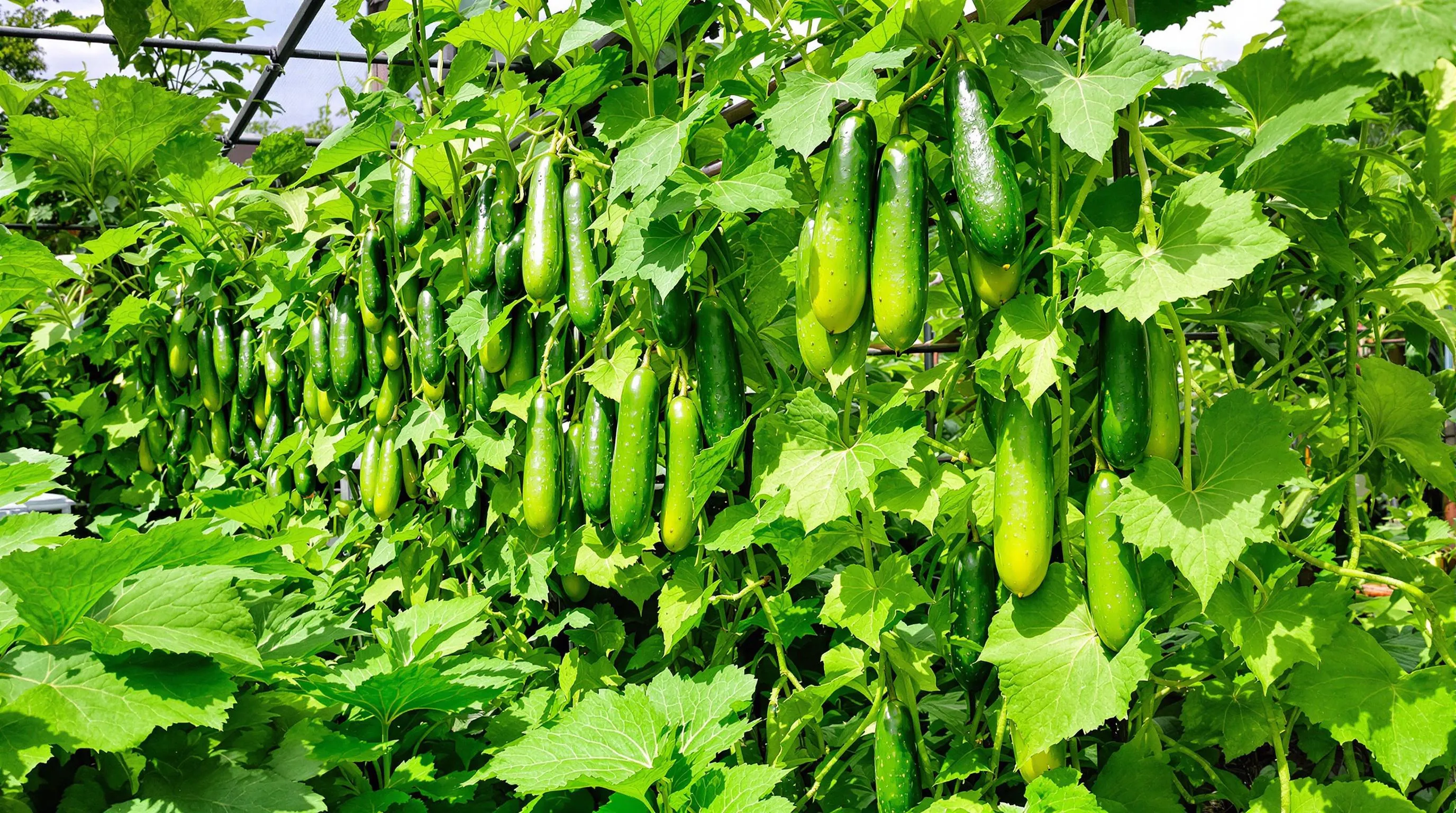
Cucumbers are essential crops for any fermentation garden, providing the foundation for crisp pickles and adding refreshing crunch to kimchi variations. These versatile vegetables thrive in warm conditions and can be incredibly productive when properly managed in your garden space.
Pickling Cucumber Varieties Worth Growing
For successful fermentation, choose cucumber varieties specifically bred for pickling rather than standard slicing types. ‘Boston Pickling’ cucumbers offer excellent disease resistance and uniform 3-4 inch fruits perfect for whole pickles or spears. ‘National Pickling’ remains a time-tested heirloom variety that maintains its crispness throughout the fermentation process. For small spaces, consider ‘Parisian Gherkin’ with its compact vines and abundant production of small, bumpy fruits ideal for traditional lacto-fermented cornichons. ‘Homemade Pickles’ lives up to its name with medium-sized fruits that absorb brine flavors exceptionally well, while ‘County Fair’ offers impressive disease resistance and crisp texture even without traditional crisping agents. For kimchi applications, ‘Kirby’ cucumbers provide the perfect balance of water content and firmness to maintain their structure when fermented with spicy Korean seasonings.
Trellising Techniques for Maximum Yield
Trellising your cucumber plants vertically delivers multiple benefits for fermentation gardeners. A-frame trellises create accessible growing surfaces on both sides, maximizing space efficiency while keeping fruits clean and straight. For season-long production, install cattle panels in an arch formation, allowing ample air circulation that reduces powdery mildew issues common in cucumber plantings. String trellis systems with horizontal supports enable easy training of cucumber vines upward, significantly increasing your yield per square foot while making harvest simpler. For container gardens, consider spiral cucumber supports that expand as plants grow, providing adequate support while maintaining a small footprint. Proper trellising not only improves yield but also enhances fruit quality by preventing ground contact that often leads to misshapen cucumbers or pest damage—both critical factors for successful fermentation projects where visual appeal and structural integrity matter.
Growing Peppers for Hot Sauce and Fermented Condiments
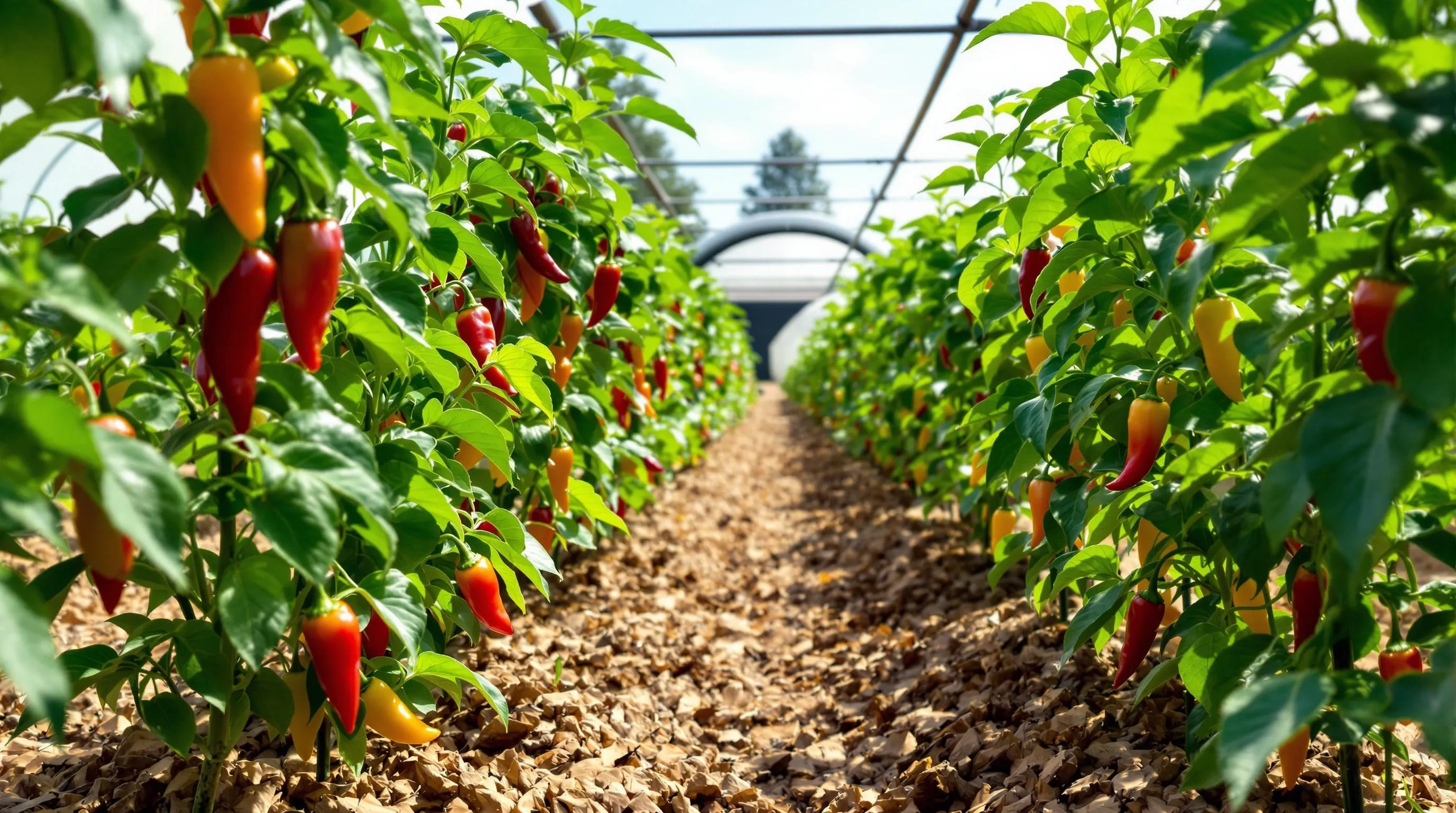
Peppers are essential crops for any fermentation garden, providing the heat and flavor foundation for homemade hot sauces, fermented chili pastes, and spicy condiments. Their versatility in fermentation projects makes them worth the dedicated garden space, whether you’re a heat enthusiast or just looking to add subtle warmth to your creations.
Heat-Loving Pepper Care Tips
Peppers demand full sun exposure of at least 6-8 hours daily to thrive and develop their signature capsaicin compounds. Plant your peppers in well-draining soil with a pH between 6.0-6.8, enriched with compost to provide essential nutrients. Space plants 18-24 inches apart to ensure proper air circulation, which helps prevent fungal diseases that can compromise your harvest. Water consistently but avoid overwatering – peppers prefer slightly dry conditions once established, with soil moisture checked 1-2 inches below the surface before watering again. Apply a 2-3 inch layer of organic mulch around plants to retain moisture and suppress weeds. For maximum capsaicin development, slightly stress your plants by reducing water after fruit set (but never let them wilt completely). Harvest peppers when they’ve reached their full color for the most intense flavor profile in your fermented creations.
Extending Your Pepper Growing Season
Start pepper seeds indoors 8-10 weeks before your last frost date to maximize your growing window. Choose quick-maturing varieties like ‘Hungarian Hot Wax’ or ‘Early Jalapeño’ for shorter seasons, as they can produce harvestable peppers 60-75 days after transplanting. Employ season extenders such as row covers, cloches, or hoop houses to protect plants from both early and late-season temperature drops, potentially adding 4-6 weeks to your growing season. Apply black plastic mulch around plants to warm soil temperatures by 5-10°F, accelerating growth and fruit development. When frost threatens, pull entire plants with unripe peppers and hang them upside down in a garage or basement – many fruits will continue ripening. Alternatively, pot up your most productive plants before the first frost and move them indoors near a sunny window for continued harvest through winter. Utilizing these techniques can ensure a steady supply of fresh peppers for year-round fermentation projects.
Raising Robust Radishes for Quick Fermentation Projects

Radishes are the perfect entry point into fermentation gardening due to their rapid growth cycle and crisp texture that holds up beautifully in ferments. These root vegetables can be ready to harvest in as little as 21-28 days, making them ideal for quick fermentation projects when you’re eager to see results. Their peppery flavor transforms during fermentation, mellowing into a tangy, complex taste that enhances many dishes.
Succession Planting for Continuous Harvests
Master the art of succession planting to ensure you’ll never run out of radishes for your fermentation projects. Sow new seeds every 7-10 days throughout the growing season to maintain a steady supply. Choose cool weather periods for best results, as radishes thrive in temperatures between 50-65°F. Create dedicated radish rows in different garden sections, labeling each with planting dates to track your succession schedule. For container gardeners, rotate several pots on different planting schedules to maximize limited space. This methodical approach guarantees fresh radishes are always available for your fermenting crocks, allowing you to experiment with different fermentation stages and flavor profiles.
Colorful Radish Varieties for Visual Appeal
Diversify your fermentation creations with visually stunning radish varieties that bring both flavor and aesthetic appeal to your jars. Watermelon radishes reveal stunning pink centers when sliced, creating eye-catching layers in transparent fermentation vessels. French Breakfast radishes offer an elongated shape with red tops and white tips, perfect for vertical arrangements. Purple Plum radishes deliver deep violet exteriors that infuse fermentation brines with subtle pink hues. White icicle varieties provide stark contrast when mixed with more colorful varieties. Try Yellow Helios or Green Meat radishes for truly unexpected colors that transform ordinary ferments into conversation pieces. These vibrant varieties not only enhance the visual appeal of your fermentations but also introduce subtle flavor variations, from ultra-spicy to surprisingly sweet.
Herbs and Spices That Elevate Fermented Foods
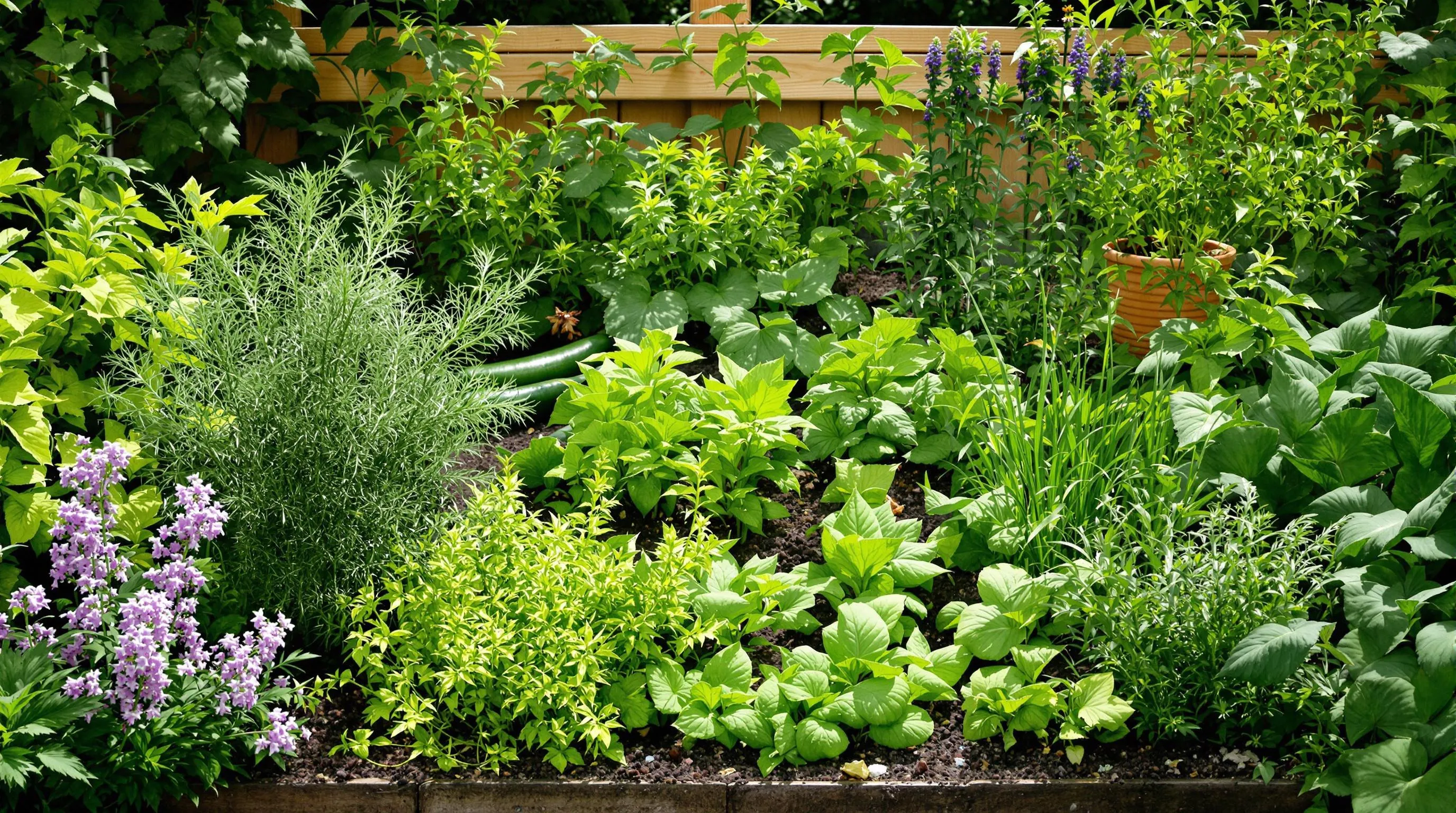
Must-Grow Dill and Garlic for Pickles
No pickle fermentation garden is complete without robust dill and pungent garlic plants. Dill’s feathery foliage and umbrella-shaped seed heads both contribute distinctive flavors to fermented cucumbers—fresh dill weed creates bright, aromatic notes while dill seeds provide a more intense, earthy flavor. Plant dill in well-draining soil where it receives 6-8 hours of sunlight daily, and succession plant every 2-3 weeks to ensure a continuous harvest throughout pickling season. For garlic, fall planting yields larger bulbs ready for harvest by mid-summer, perfectly timed for cucumber fermentation. Choose hardneck varieties like ‘Music’ or ‘German Red’ for more complex flavors in your ferments. Interplant dill and garlic near your cucumber trellises to create a convenient “pickle garden” zone where all essential ingredients grow together, making harvest days more efficient.
Exotic Herbs to Experiment With
Expand your fermentation flavor profiles by growing unique herbs rarely found in grocery stores. Thai basil adds anise-like notes to kimchi and fermented hot sauces, while lemongrass infuses citrusy brightness without acidity that could disrupt fermentation. Mexican epazote, traditionally used in bean ferments, imparts an earthy, minty complexity while reportedly reducing gas-producing compounds. Consider growing perennial herbs like lovage (with its intense celery flavor) and winter savory (offering peppery, thyme-like notes) that provide years of harvests from a single planting. Shiso (perilla) leaves introduce a distinctive cinnamon-basil flavor profile that pairs exceptionally well with fermented radishes and Asian-inspired krauts. Plant these exotic herbs in a dedicated section or intersperse them throughout your garden, harvesting small amounts to test in fermentation recipes before scaling up your favorite combinations.
Fruit Options for Sweet Fermentation Experiments

While vegetables form the foundation of many ferments, fruits offer exciting possibilities for sweet and tangy creations like fruit kvass, wine, and fruit-infused kombucha. Adding fruit to your fermentation garden expands your homemade probiotic repertoire beyond savory options.
Small-Space Berry Growing
You don’t need acres of land to grow fermentation-worthy berries. Strawberries thrive in hanging baskets or vertical towers, producing abundant fruits in minimal space. Plant everbearing varieties like ‘Ozark Beauty’ or ‘Seascape’ for extended harvests throughout the growing season. Blueberries adapt well to container growing—choose compact cultivars such as ‘Top Hat’ or ‘Peach Sorbet’ that reach only 2-3 feet tall. For vertical spaces, blackberries and raspberries can be trained along walls or fences using a simple trellis system. Thornless varieties like ‘Triple Crown’ blackberries offer easier harvesting for fermentation projects. Ensure your berries receive 6-8 hours of sunlight daily and consistent watering for juicy fruits that ferment beautifully into shrubs, fruit wines, or flavored kombucha bases.
Caring for Fruit Trees in Limited Spaces
Maximize your fermentation potential by incorporating dwarf or columnar fruit trees into small gardens. Apple varieties like ‘Urban Apples’ or ‘Colonnade’ grow vertically with minimal horizontal spread, perfect for narrow spaces while providing fruits ideal for hard cider fermentation. Dwarf peach trees such as ‘Bonanza’ reach only 6 feet tall and thrive in large containers, producing full-sized fruits for wine or fruit kvass. Carry out espalier techniques—training branches horizontally against walls or fences—to grow pears, apples, or plums in two-dimensional spaces. This method not only saves space but improves air circulation, reducing disease issues. Maintain fruit trees with regular pruning to control size and shape, focusing on removing crossing branches and maintaining open centers for better sunlight penetration. For container-grown trees, use high-quality potting mix amended with compost and ensure adequate drainage to prevent root rot, creating optimal conditions for growing fruits destined for your fermentation projects.
Building Healthy Soil for Nutrient-Dense Fermentation Crops
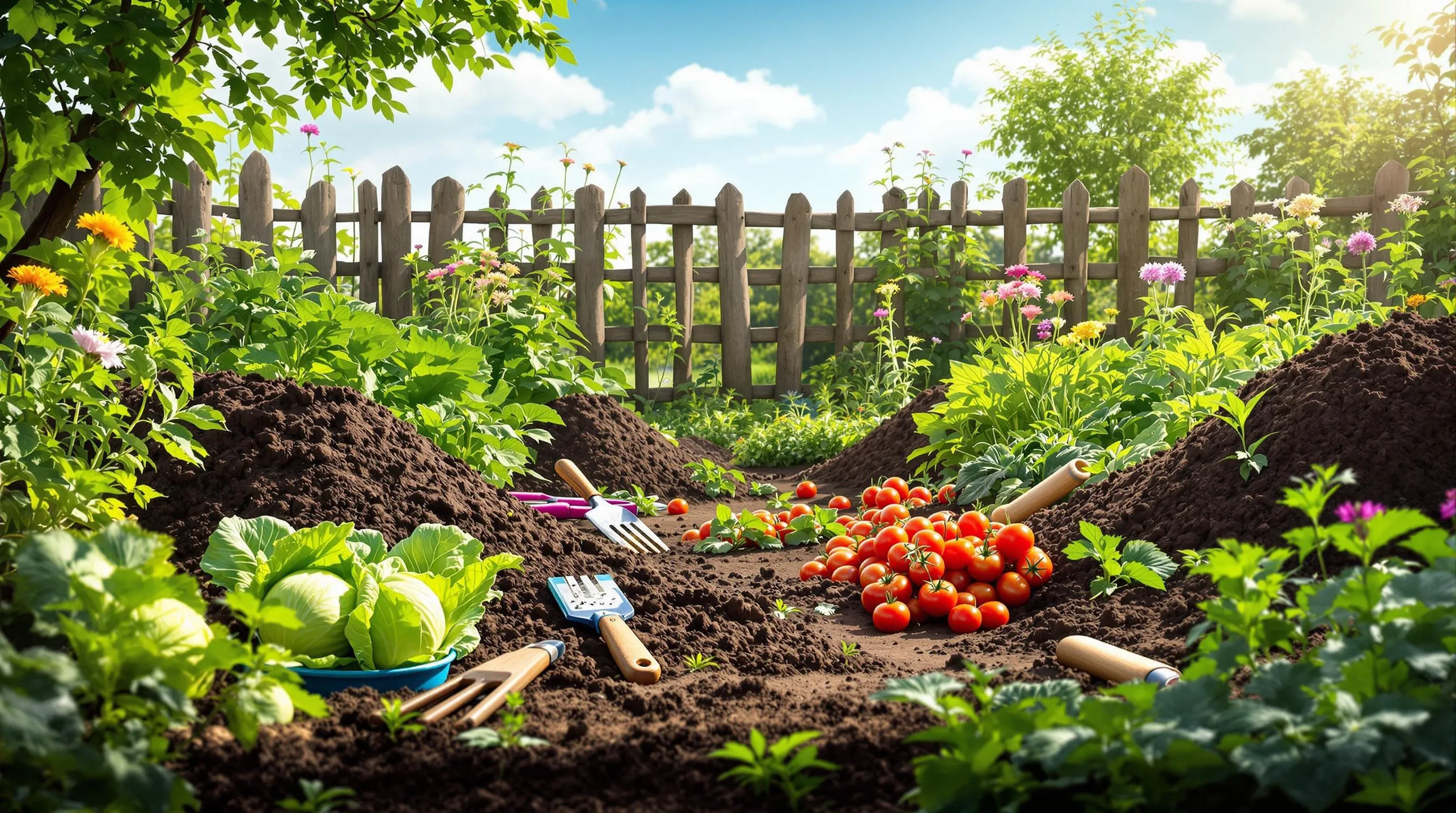
The foundation of exceptional fermented foods begins in your soil. Nutrient-rich soil produces vegetables with higher mineral content, better flavor, and improved fermentation qualities that transform into superior krauts, kimchi, and pickles.
Composting Practices for Garden Health
Carry out a three-bin composting system to create a continuous supply of rich organic matter for your fermentation crops. Start by layering nitrogen-rich materials (vegetable scraps, coffee grounds, fresh grass clippings) with carbon-rich materials (dry leaves, straw, shredded paper) in a 1:3 ratio. Turn your compost pile every 2-3 weeks to accelerate decomposition and apply finished compost as a 2-inch top dressing around plants twice yearly. For fermentation gardens, incorporate specialized additions like crushed eggshells for calcium and kelp meal for trace minerals that enhance vegetable nutrient density. Used fermentation brine can also be diluted (1:10 with water) and returned to the garden, creating a beneficial cycle that introduces beneficial microorganisms back into your soil.
Cover Crops to Improve Soil Structure
Plant strategic cover crops during off-seasons to naturally rebuild soil health for your fermentation garden. Fast-growing buckwheat improves phosphorus availability and attracts beneficial insects, while winter rye prevents erosion and adds organic matter when turned under in spring. Clover and vetch fix nitrogen from the air, providing free fertilizer for nitrogen-loving cabbage family crops. For maximum benefits, sow cover crops 4-6 weeks before your first fall frost and incorporate them into soil 2-3 weeks before spring planting. This practice not only prevents nutrient leaching but also improves soil structure, creating the ideal growing environment for developing crisp, flavorful vegetables that maintain their texture during fermentation processes.
Extending Your Growing Season for Year-Round Fermenting
Your fermentation garden journey doesn’t need to end with the growing season. By implementing these garden ideas you’ll transform your outdoor space into a fermentation powerhouse that keeps giving year-round.
Start small with a few key crops like cabbage and cucumbers then expand as your fermentation skills grow. Remember that healthy soil leads to nutrient-dense vegetables which create more flavorful ferments.
The beauty of designing a garden specifically for fermentation is the connection it creates between growing and preserving food. You’ll experience the satisfaction of nurturing plants from seed to jar while developing deeper appreciation for seasonal eating.
Ready your garden tools and fermentation crocks—your path to probiotic-rich homemade creations begins in the soil you cultivate.

